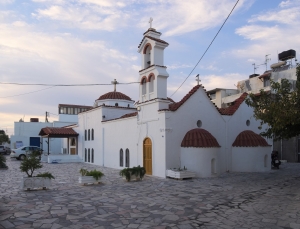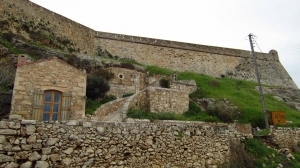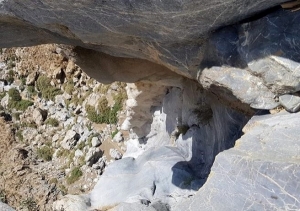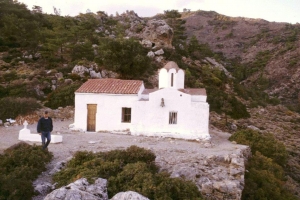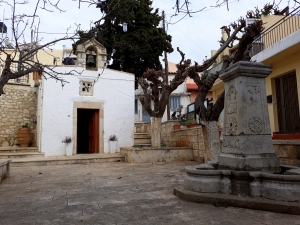In the Barotsiana district of village Argyroupolis there is the church of Our Lady (Panagia) Barotsiani, a single-storey 13th-century church, to which a chapel of Saint Anthony was added later. The name comes from the Venetian family Barozzi, who owned the area of Argiroupolis.
The double aisled temple of Jesus Christ our Savior (Afendis Christos) and Saint Charalambos is located in the district of Kato Mera, near the port of Ierapetra and very close to the fortress of Kales. It is the oldest temple in the city, which has taken its present form as a result of successive interventions.
On the west side of the imposing fort of Fortetsa in Rethymnon and above the sea we meet the cavernous church of Agios Spyridon (celebrates on 11 August and 12 December). The church dates back to the late 16th century and is one of the oldest surviving temples in the city of Rethymnon.
The church of the Megali (Great) Panagia in the central square of Neapolis dominates all parts of the city, being the largest church of Eastern Crete. It is dedicated to the Dormition of Theotokos and during its celebration, on August 15, pilgrims from all over Crete arrive here.
The wild canyon of Agia Paraskevi is located in the Asterousia Mountains and on the borders of the village Paranymphi. It is called the little "brother" of the adjacent imposing and most famous Ambas Gorge, as both of them have the two highest waterfalls of Heraklion prefecture.
The single-nave church of Saint George (Agios Georgios) Kavousiotis is located south of the village of Kritsa at position Kavoussi. Externally it retains an arcosolium, that is, an arched grave of the Venetian Era.
To the north of the Sougia settlement, the church of Saint Irene (Agia Irini) is preserved in the architectural type of the single-nave church with a dome, to which an arched-roof narthex was added in a second stage, which survives as a late reconstruction of its dome.
Within the picturesque narrow streets of the market of Epano Archanes, we meet the small square with the small temple of the Holy Cross (Timios Stavros). The church is single-aisled and vaulted, and part of the sanctuary is carved in rock, while its sanctuary is stone-built.













